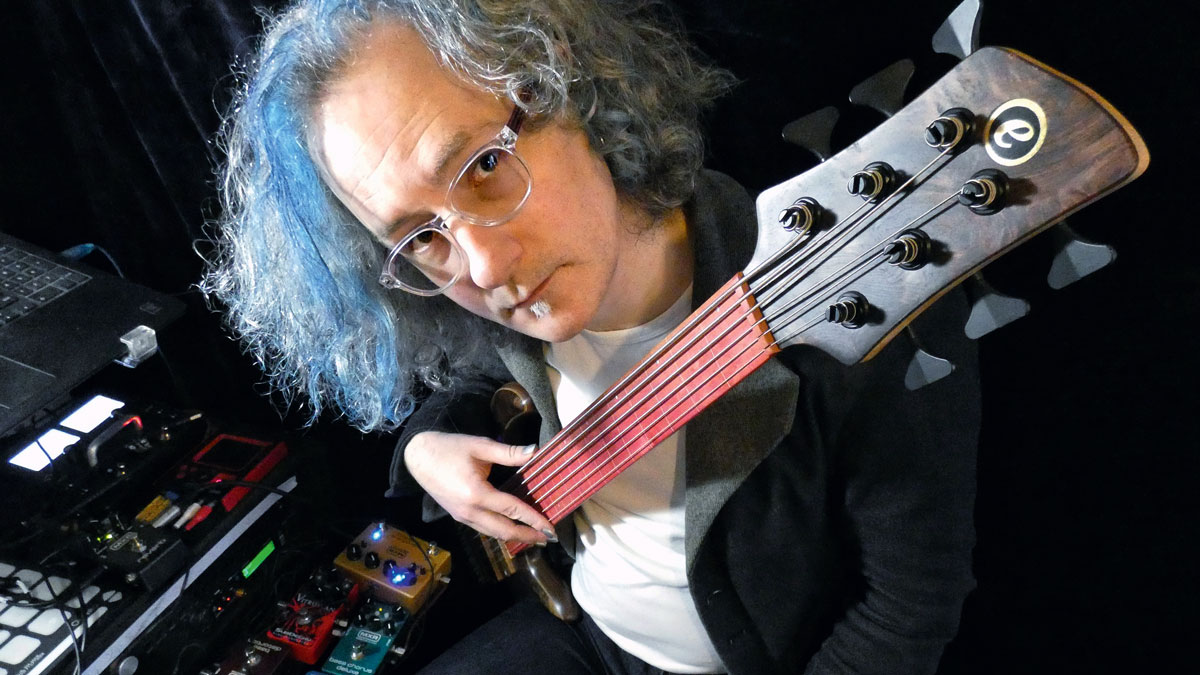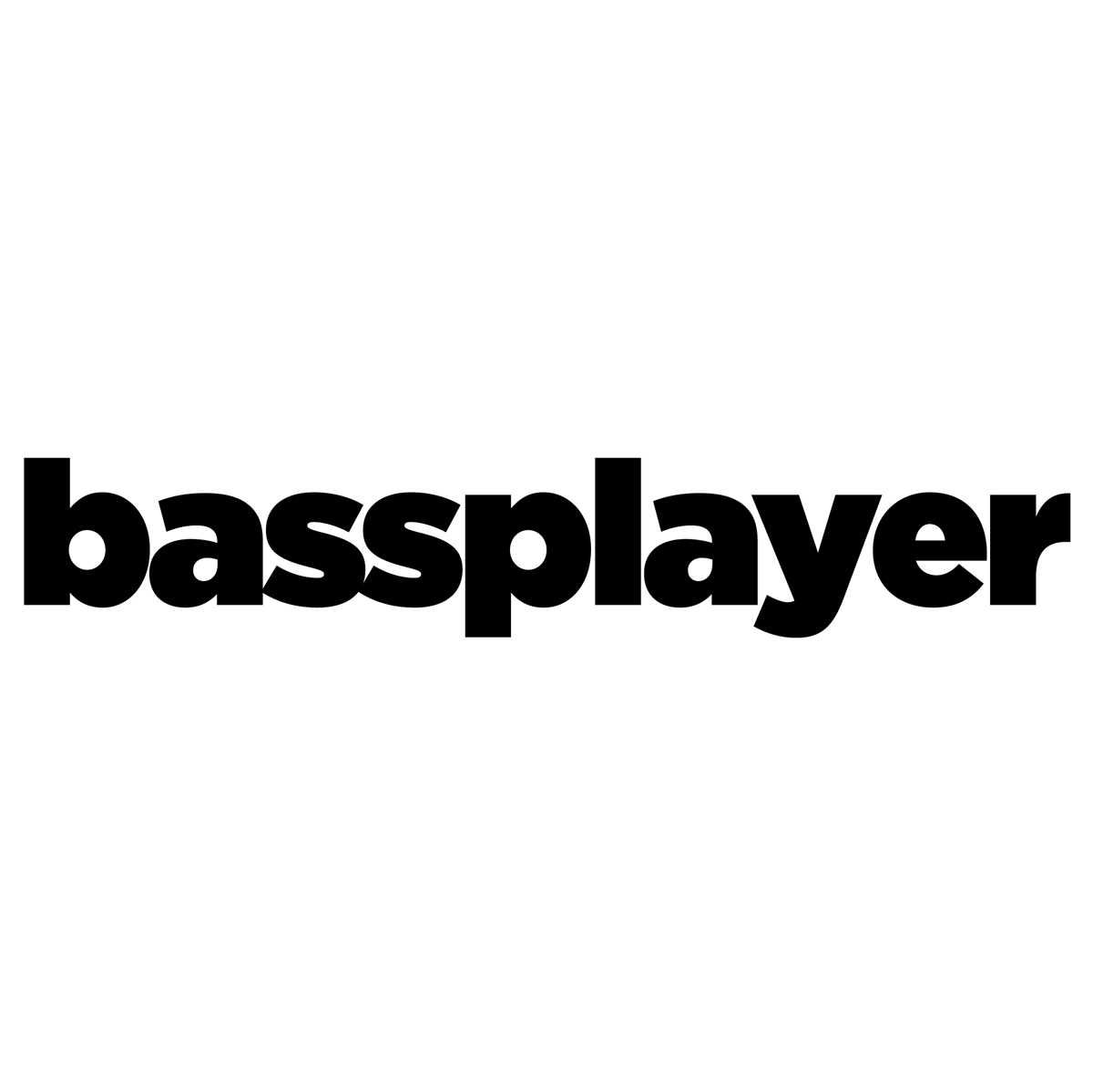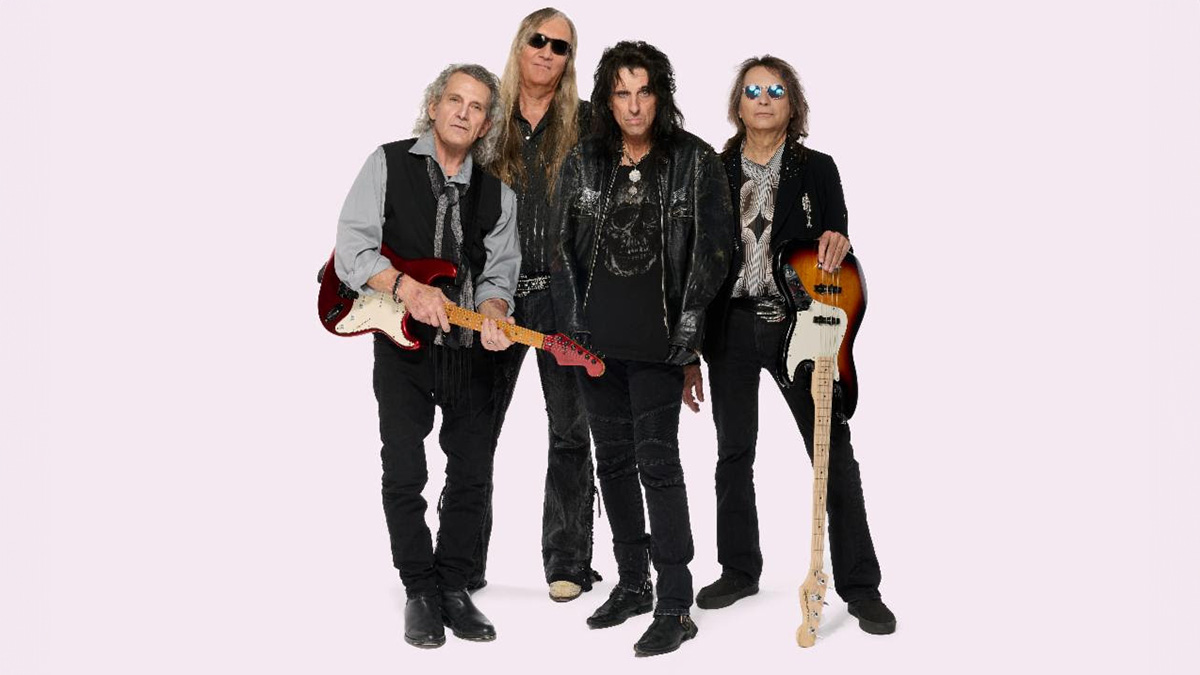Bass effects pedals: top players and industry heavies reveal their favorite FX and pedal secrets
Influential builders and players on the future of bass pedals

If a bass player could only own three types of bass effects, what would they be, and why?
Steve Lawson, solo bassist For me, it’d be a delay, a reverb, and an overdrive, but that’s not what I’d choose for a wedding gig! In that setting, I’d go for an envelope filter, a chorus, and an overdrive—I can cover a lot of sonic range with those three, and in a band setting they’d be more widely applicable than the time-based effects.
Jamie Stillman, founder of Earthquaker Devices I almost always see bassists using compression, overdrive, and EQ. I’m personally a fan of fuzz, but I think a lot of bassists avoid it because it annihilates the signal. I like that “annihilation” tone.
Jeff Slingluff, U.S. guitar product manager for Boss/Roland The first one is easy: A compressor, like a Boss BC-1X Bass Comp. Bass is inherently dynamic, and it’s important to have a compressor to maintain your string levels. Bass distortion, like the Boss BB-1X Bass Driver, would be the second most important—it’s a quick way to add fat, interesting harmonics and overtones. The third is more of a toss-up, but for me, it would be a bass synthesizer, like the Boss SYB-5, because they’re useful for any style of music, from funk to rock.
Darryl Anders, bass products manager for Dunlop Manufacturing A preamp/DI is a great pedal to have in case the amp fails, the battery fails on an active bass, to add boost and tone control to a passive bass, and to control the tone you send to the FOH engineer. An octave is great for adding more depth and covering synth bass parts. And distortion/overdrive adds grit and dirt that can help cut through a wall of loud guitars.
Andrew Barta, president of Tech 21 USA For me, it would be distortion/fuzz, compressor, and chorus. Obviously, it depends on one’s musical style, as it’s unlikely a jazz player would want distortion, while other players are rarely without it. A compressor helps even out your sound, especially if there’s subpar backline or if your bass isn’t all that great. A pitch-shifting/harmonized chorus always adds some nice depth and dimension; it’s more usable for bass, and it won’t waver the foundation.
Jonathan Hischke of Dot Hacker, Broken Bells, and Hella Drive is probably the most important category. A good overdrive pedal can function as a tone-shaping, always-on effect, or as something to kick in for a little more power or color, and it can also get you into distortion and fuzz territory. These days, lower octave/subharmonic effects have become important for bass players. And, of course, compression is a vital (and often misunderstood) element of any bass tone heard on record and in most performance capacities.
Get The Pick Newsletter
All the latest guitar news, interviews, lessons, reviews, deals and more, direct to your inbox!
Tim Lefebvre of the Tedeschi Trucks Band and Donny McCaslin I would say an octaver and some sort of overdrive. If you’re so inclined, a compressor, too, I suppose. You don’t need any of them in a perfect world, but tastefully used, these effects can help push the music forward without it sounding dated or too “effecty.”
Dave Boonshoft, president/CFO of Aguilar Amplification Get a distortion pedal that offers a flexible amount of saturation; that’ll give you the ability to “rough up” your sound with just a bit of distortion or go for heavier sounds. Get a compressor that offers both high-and low-compression ratios so that you can set the ratio (or slope) high for limiting on slap techniques and use low ratios for long notes. And a good octave pedal will give you the ability to add synth-like overtones to your bass lines.
In terms of general categories (distortion, modulation, delay, dynamics, filters, reverb, pitch shifting, etc.), what are the best practices for a signal chain?
Stillman I tend to go: input > dynamic or octave effects > overdrive > fuzz > filter > modulation > delay > reverb > EQ, but it all comes down to preference. Anything can sound great if you know how to use it.
Anders This is really a personal choice, and it depends on the player’s style, but I’d recommend compression, octave, dynamics, filters, modulation, delay, pitch shifting, reverb, and distortion.
Lefebvre I would put the devices that drive the signal first. From there, you can put the stuff that modulates for the best overall effect. You can also put stuff after the modulators for “finishing” the sound, like a plug-in.
Lawson I’m a fan of experimentation—chain ’em up and see what happens. There are a few “rules” just ripe for breaking. For example, delays often end up at the end of the chain, but put a filter after a delay, and the envelope will gradually close as the repeats get quieter. I do like having a pitch-shifter at the start of the chain, because that can get really gnarly if you have delays and reverbs before it. Sometimes, gnarly is exactly what I’m looking for!
Slingluff A good starting point is to place delay-based effects, like reverb, delay, and chorus after compression or distortion. Effects like wah and T-wah tend to work best pre-distortion, and EQ works well in either position, depending on your needs. But the fun of pedals is creating your own order and finding your own unique sound.
Barta The basic rule of thumb is that tone-modifying effects like distortion, compression, pitch shifting are first in the chain, and time-based effects, such as delay and reverb, should be last. Filters can be first or last, depending on what you’re trying to achieve. We always recommend trying it both ways.
Boonshoft The first pedals in the signal chain should be the ones most sensitive to dynamics and input level, including modulation and filter effects. Next, place pedals that control dynamics, such as compressors and limiters, and then add distortion and fuzz. The last pedals in line should be reverbs.
Hischke The general template I keep in mind is: fuzz (if it’s the type that responds differently to a non-buffered signal), tuner, compression, “attack” effects (swell, sustain, freeze, etc.), octave, pitch shifting, distortion, overdrive, tremolo, envelope filter/synth, amp simulation, bass boost/lowpass filter, delay, reverb, and modulation. There are always exceptions, of course, and experimentation is important, but I find that setting up my chain along these lines tends to be both effective and versatile.
Do you see any developments in DSP and other digital technologies that will encroach on analog effects?
Slingluff Absolutely. The new technologies we’ve developed, like the MDP (Multi-Dimensional Processing) used in the Boss BC-1X Bass Comp and Boss SY-300 Guitar Synthesizer, are only plausible in a digital world.
Stillman The biggest way DSP developments are affecting players is limitless possibilities. I think people get more creative when they have limitations; they tend to get more experimental when they have to create new sounds from a couple old effects pedals. With all these do-it-all, rack gear/digital audio workstations disguised as multi-effect pedals, it’s easy to get bogged down in technology rather than actually playing.
Lefebvre Nothing really tracks real-time like analog effects, but guys like Owen Biddle and Zach Danziger of Edit Bunker are making serious strides in that area. What they are doing is stunning.
Anders I can see DSP being used to control analog effects, making for better tracking and fine-tuning of analog parameters.
Boonshoft I think DSP is great when working totally “in the box,” that is, recording directly into computer software. Still, adding analog effects adds a much more complex and musically compelling sound to the bass. Analog effects integrate better than digital into the whole system of player, bass, and amp.
Hischke There is so much happening in that digital realm, and a lot of it is really sounding authentic these days. I think analog effects will be safe as long as players value a simple interface and the ability to tailor their sound on the fly, and I tend to be one of those people. If you’re a player doing a prescribed and consistent set night after night, however, current technology’s modeling and signal-chain versatility could save you a lot of headache. And if you have the time and know-how, the digital world has endless effects to explore. But there’s something magical about an analog fuzz or an analog delay that I can’t describe.
Barta There are constant developments, but it’s unlikely that analog is going to fade away anytime soon. Digital sound quality has gotten better, it brings costs down, and user interfaces are getting a bit easier, but the biggest disadvantage of digital effects is the learning curve—programming, menus, hidden functions, etc. You’re lost without an owner’s manual. Analog gear is basically “what you see is what you get”: just plug in, turn the knobs, push a couple of buttons, and you’re ready to play. While we do use some digital technology in some of our products, they are designed with an analog mind.
Lawson Being able to save the same five effects in totally different orders is what DSP does so well. DSP excels at fixed variation, and analog is great for continuous/random variation. I pretty much always have both—a pile of analog pedals, and these days, a MOD Duo with a ton of different digital “pedalboards.” I keep the analog pedals up at hand height so I can continually vary what they’re doing. My big interest with pedals is continuous control, whether that’s hooking up a MIDI controller to my processor or tweaking the time on a delay to get freaky sounds.
How can a bass player incorporate effects into their live rig without compromising supportive low-frequency response?
Anders By using a mixer or blender pedal to retain the amount of dry unaffected signal. MXR Bass Innovations pedals have a separate dry control built into each effect for this specific reason.
Lawson Sometimes, I like using effects designed for a guitar precisely because they don’t preserve the bassy qualities, but if you get pedals designed by bass players for the job we do, more often than not, they can deal with the demands of every gig. I love having the option to choose; the MXR Bass Chorus Deluxe, for example, has a separate switch to leave the low frequencies unprocessed if I want to add chorus just to the upper harmonics, and the Darkglass VMT has a blend control to mix processed and clean signals. It’s lovely.
Lefebvre You try to use effects tailor-made for bass, like bass fuzzes and overdrives. In the absence of these, try to find pedals with blend knobs so that the clean bass tone is still represented. Also, shoot for effects that are true bypass.
Slingluff Effects like compression and EQ don’t compromise low frequencies, and others, like distortion, do. People who run a lot of distortion via pedal or distorted amps often send a DI signal to the house so they can take advantage of the subwoofers. In some instances, a second amp for bi-amping is also a great choice.
Stillman Narrow your options and find the one that works best for your playing style. What works well for one bassist probably won’t be the same for everyone, so experiment. I love low end, so all our pedals do a pretty good job of passing a full-frequency response, even though they were all designed with guitar in mind.
Barta Use bass-oriented products to keep the low end intact. Many distortion pedals are notorious for emphasizing midrange and cutting lows, which is fine for guitar. Likewise, many chorus pedals also cut the low end, or they get wobbly and make you seasick. The important thing to do is try different products and listen for yourself. Last, the cabinet you use greatly influences the resulting sound. Simple physics dictates you can’t pump 1,000 watts into a 1x10 cabinet and expect it to sound good. Bear in mind that your entire signal chain is only as good as the weakest link.
Hischke I spend a lot of time researching which pedals don’t compromise these elements in the first place. Rather than looking for effects that might take me out of the bass realm, I am interested in things that take me further into it and add another level of versatility or creative spark. Many people think it is as easy as running a dry blend alongside the effected signal path, which can work in many circumstances, but I shoot for a more integrated approach.
Boonshoft Don’t buy effects that roll off low end. For that matter, don’t buy effects that roll off high end, either! That said, these are effects, and they’re supposed to change things up in your sound. Know which effects make the music you are playing better, and use effects that unleash your creativity.
Bass Player is the world’s most comprehensive, trusted and insightful bass publication for passionate bassists and active musicians of all ages. Whatever your ability, BP has the interviews, reviews and lessons that will make you a better bass player. We go behind the scenes with bass manufacturers, ask a stellar crew of bass players for their advice, and bring you insights into pretty much every style of bass playing that exists, from reggae to jazz to metal and beyond. The gear we review ranges from the affordable to the upmarket and we maximise the opportunity to evolve our playing with the best teachers on the planet.
“Jimi was staying at a hotel in Times Square. He had his hair set in pink curlers and we would just talk band drama”: Electro-Harmonix founder Mike Matthews on befriending Hendrix, booking Chuck Berry and the birth of pedal culture
“Our answer to everything players have asked for and more”: Neural DSP’s Nano Cortex had one major drawback – but now it’s been addressed with a huge free firmware update that takes on Kemper and TONEX





![[from left] George Harrison with his Gretsch Country Gentleman, Norman Harris of Norman's Rare Guitars holds a gold-top Les Paul, John Fogerty with his legendary 1969 Rickenbacker](https://cdn.mos.cms.futurecdn.net/TuH3nuhn9etqjdn5sy4ntW.jpg)





